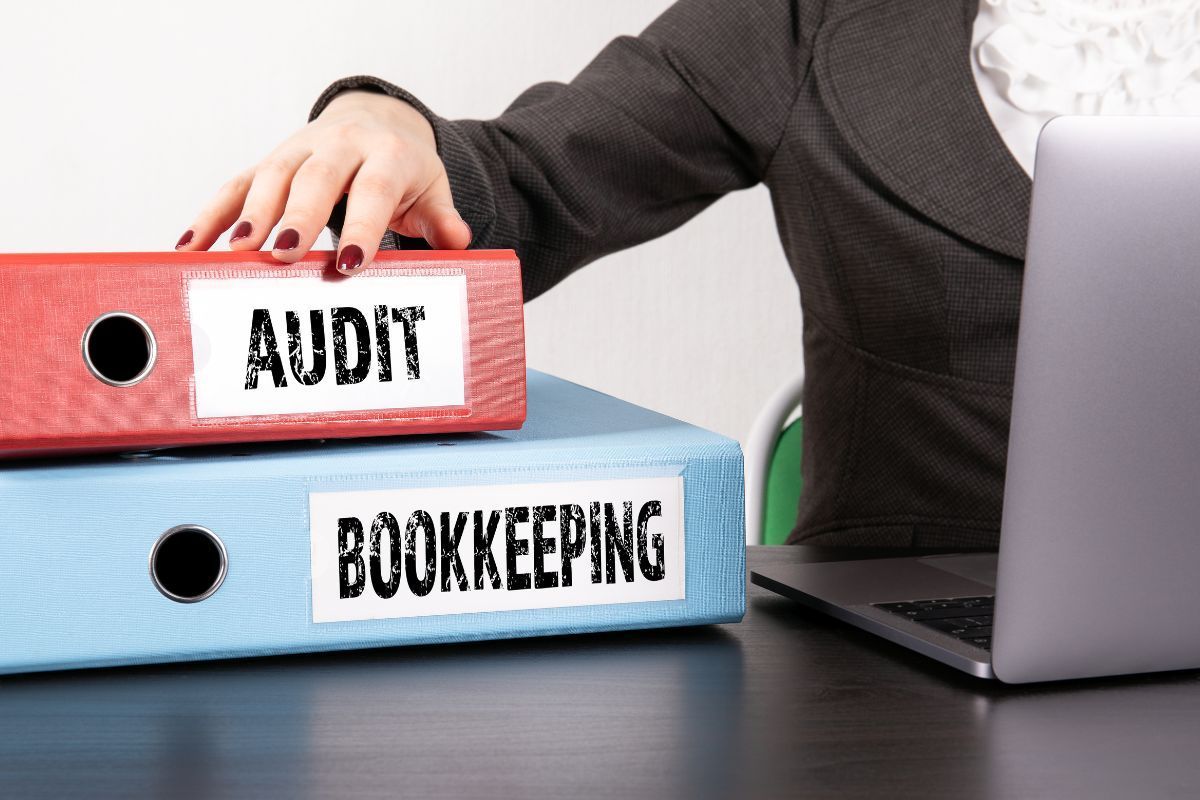Essential Tax Deductions For Canadians: Save On Your Returns
Tax season can be stressful, leaving many feeling overwhelmed. However, understanding available deductions and credits can ease that burden. In 2023, Canada offers various tax benefits to lessen your taxable income and lower your tax bill. Don't let the pressure of filing weigh you down—explore these opportunities to make tax season more manageable!
In this article, we'll guide you through various Canadian tax deductions, providing insights and strategies to maximize your tax return. We’ll explore deductions, credits, and filing methods, empowering you to make informed choices.
The Importance Of Maximizing Canadian Tax Deductions
Maximizing Canadian tax deductions is essential for lowering your taxable income. This directly affects the amount of tax you owe. By carefully claiming eligible deductions, you can reduce your tax liability and possibly increase your refund. This strategy improves your financial well-being and ensures compliance with the tax regulations set by the Canada Revenue Agency (CRA).
Differences Between Deductions And Credits
It’s essential to understand the difference between deductions and credits. This knowledge is crucial for effective tax planning. It can help you maximize your refund.
Tax Deductions
These amounts reduce your total taxable income. This can ultimately lower your overall tax liability. For instance, if you have $5,000 in deductions and an income of $50,000, your new taxable income would be $45,000, meaning you pay taxes on a smaller amount. Common types of deductions include mortgage interest, student loan interest, and medical expenses.

Tax Credits
Tax credits are different from deductions. They directly reduce the amount of tax you owe. This makes them especially valuable. They’re categorized into refundable and non-refundable credits:
- Refundable credits can lead to a refund even if the credit amount exceeds your total tax payable. For example, if you owe $200 in taxes but qualify for a $500 refundable credit, you would receive a $300 refund.
- Non-refundable credits, on the other hand, can minimize your tax liability to zero but won't result in a cash refund if they surpass the amount of tax owed. For instance, if you owe $300 in taxes and have a $600 non-refundable credit, your tax will be reduced to zero, but you won't receive a refund for the remaining $300.
Understanding these differences helps taxpayers make informed decisions. This allows them to optimize their tax situation and take full advantage of available benefits.
Popular Canadian Tax Deductions And Credits For 2023
As tax season approaches, Canadians should look into available deductions and credits for 2023. These can lower taxable income and boost potential refunds. Knowing common deductions related to work, education, and family can help maximize savings. This understanding supports more informed financial decisions.
Canada Child Benefit
Raising a family can be costly. Much of your take-home income often goes toward child care and medical expenses. The Canada Child Benefit (CCB) provides qualified families a tax-free monthly payment. This payment helps ease the costs of raising children under 18. The CCB might also incorporate the Child Disability Benefit and other provincial and territorial programs.
Registered Retirement Savings Plan (RRSP) Deduction
Deductions to your RRSP contributions reduce your taxable income. Any remaining contributions can be carried forward to provide future tax benefits. Deducting all contributions in the same year is unnecessary to optimize your tax savings. Instead, consider deducting only the amount needed to cut down on your tax liability or maximize your refund. Any leftover contributions can be deducted when your income increases in future years.
Canada Workers Benefit
The Canada Workers Benefit (CWB) is designed to support low-income workers. Individuals may also qualify for additional benefits, such as the disability supplement. One must earn a minimum of $3,000 to be eligible, though the maximum income thresholds differ by province.
The amount received will depend on two factors: location and family status, whether single or with dependents. Starting in July 2023, individuals who received the refundable Canada Workers Benefit (CWB) in 2022 will qualify for advance payments. These payments will total 50% of their CWB and be distributed in three installments to help manage the rising cost of living.
GST/HST Credit
The Goods and Services Tax/Harmonized Sales Tax Credit (GST/HST Credit) is designed for low to modest-income families with children. It helps offset the taxes they pay on consumer goods and services. Distributed quarterly, this credit can be vital for families navigating tight budgets. Generally, you must only file your taxes on time to qualify for the GST/HST credit every year, even if you have no income to present.
In 2023, a grocery rebate was also issued to recipients of this tax credit to alleviate the burden of rising costs for essential items.

Medical Expenses
Medical expenses can accumulate significantly over a year. Routine dental visits, prescription costs, and doctor's fees can all qualify for tax credits. To optimize your claim, one spouse should consolidate all medical expenses for the immediate family. This includes yourself, your spouse, and any children under 18. Don't forget to include any dependents you support.
Often overlooked medical expenses that can be included are:
- Private medical insurance premiums
- Tutoring for children with disabilities
- Home renovations that enhance mobility or accessibility
- Travel expenses for medical treatment (if over 40 km one-way)
- Prescription glasses or contact lenses
- Dentures and dental implants
- Fertility treatment costs
Making the most of Canadian medical tax deductions can lessen the burden on many families.
Child Care Expenses
You can claim tax-deductible child care expenses for various services. Eligible expenses include payments for day nurseries and daycare centers. They also cover costs for nannies and babysitters. Overnight boarding schools and camps with lodging are included, too. Additionally, day camps and sports schools qualify as well.
Before filing, it's essential to understand who can make a claim. In a two-parent household, only the spouse with the lower net income can qualify for childcare expenses.
Disability Tax Credit
The Disability Tax Credit (DTC) is non-refundable. It helps cover extra living expenses linked to having a disability. This can lower your tax liability. To qualify, individuals must show they have a significant and long-term physical or mental disability.
You may qualify for this credit for yourself or your dependent, spouse, or common-law partner, depending on your situation. The CRA has expanded the eligibility criteria for life-sustaining therapy. This applies to Canadians living with type 1 diabetes.

Home Buyers' Amount
The Home Buyers' Amount (HBA) is available to those who purchase a qualifying home in Canada in 2022. This non-refundable tax credit allows a person to claim up to $10,000, reducing federal tax liability.
To qualify, you must be a first-time homebuyer, as the CRA defines. This means you or your partner must not have lived in a home owned by either of you during the year of acquisition or in any of the four preceding years. For 2023, the tax credit amounts to $1,500.
Canada Caregiver Credit
If you support a spouse, common-law partner, or dependent having a physical or mental disability, you might qualify for the Canada Caregiver Credit (CCC). This non-refundable tax credit is aimed at helping caregivers.
The amount you can claim for the CCC depends on your relationship with the individual and your circumstances. It also depends on their net income and whether you claim other credits for that person. These amounts usually change each year.
Charitable Tax Credit
Contributions to registered charities can lead to significant tax credits. This encourages philanthropy and reduces tax burdens. The Charitable Donation Tax Credit is available to those who donate to eligible recipients, like registered charities.
Self-Employment Expenses
You can be fully self-employed or have a full-time job while earning extra income from self-employment. The CRA allows you to deduct various business expenses on your tax return.
The nature of self-employment can lead to varying expenses. However, it’s essential to claim all business-related costs on your tax return, regardless of their amount. By doing so, you not only reduce your tax liability but also gain a clearer understanding of your business's overall health.
Self-employed taxpayers often encounter various everyday expenses. These include bank fees, advertising costs, and vehicle expenses. They also deal with office supplies, inventory, cell phone bills, and home office costs. This is one of the essential Canadian small business tax deductions to consider.
Other Employment Expenses
Most employees cannot deduct employment expenses. However, you may qualify for Canadian income tax deductions if your employer requires you to incur specific costs without reimbursement. You can claim these on line 22900, including any GST/HST, provided they’re stipulated in your employment contract.
Prioritize accurate record-keeping. Ensure you obtain the required T777 Statement of Employment Expenses. Also, get the T2200 Declaration of Conditions of Employment signed by your employer.
Tuition Tax Credit
As post-secondary education costs in Canada continue to rise, saving every dollar becomes essential. Students should take full advantage of the Tuition Tax Credit. Most tuition fees at Canadian colleges and universities exceed $100, making students eligible for this benefit. It's important to note that you or an immediate family member must pay the tuition to qualify for the credit.
Ontario Trillium Benefit
The Ontario Trillium Benefit (OTB) combines three credits. It supports low-income Ontarians with energy, property, and sales taxes. The benefit offers a single payment based on family income. This benefit includes:
- The Ontario Energy and Property Tax Credit (OEPTC)
- The Northern Ontario Energy Credit
- The Ontario Sales Tax Credit
Eligibility is based on a family's net income from the previous tax year. Payments for the OTB are issued separately from any income tax refunds, ensuring timely support for those in need.
Climate Action Incentive
The Climate Action Incentive helps offset carbon taxes and is available to residents of provinces like Saskatchewan, Ontario, Manitoba, and Alberta. The amount varies depending on family size.
If you live in BC, you can use the BC Climate Action Tax Credit, provided alongside your GST/HST Tax Credit. This credit is designed to aid low-income individuals and families in minimizing the carbon taxes they incur.
Home Accessibility Tax Credit
Renovations that improve safety or accessibility for seniors and people with disabilities qualify for the Home Accessibility Tax Credit (HATC). This initiative promotes essential home modifications. Eligible individuals can claim up to $20,000 in expenses, potentially resulting in a tax credit of up to $3,000.
Student Loan Interest
The CRA helps students and graduates reduce the financial burden of repaying student loans by providing a deduction for eligible interest payments. You can also carry forward any unclaimed student loan interest for up to five years. It's essential to keep your records organized.
As of April 1, 2023, the Canadian government has permanently eliminated interest on Canadian student Loans. This applies to Canada Apprentice Loans under the Canada Student Financial Assistance Program. Based on 2023 interest rates, this change will allow the average student borrower to save up to $520 annually.
Child Disability Benefit
The Child Disability Benefit (CDB) is a monthly payment. It’s tax-free and supports families with children under 18. This benefit is for those caring for a child with a severe and prolonged impairment in physical or mental functions.
To qualify for this benefit, you must meet the following criteria:
- Be eligible for the Canada Child Benefit
- Ensure your child qualifies for the disability tax credit
Moving Expenses
Relocating over 40 km for work or education can lead to tax deductions. These deductions apply to moving-related expenses, making transitions easier financially. You may qualify to claim eligible moving costs if you:
- Moved and established a new home to work or operate a business at a different location.
- Relocated to attend a full-time post-secondary program. This could be at a university, college, or another educational institution.
Eligible expenses can include travel costs. They may also cover fees for obtaining a new driver's license and utility connection charges.
GST/HST Residential Rental Property Rebate
New residential landlords can get GST/HST rebates for newly constructed or significantly renovated rental properties. To qualify, the first occupants must be tenants. It's essential to note that landlords cannot be among these initial occupants.

Take Control of Your Finances: Maximize Canadian Tax Deductions Today
Understanding and using Canadian tax deductions and credits is crucial for optimizing your tax return. By strategically claiming these benefits, Canadians can better manage their tax liabilities, which promotes financial health and compliance. Always consult a tax professional or use reputable tax software to maximize these opportunities. Don't delay—begin crafting your tax strategy today!
Want more information?
Richmond Hill, ON
Calgary, AB
Vancouver, BC
Ottawa, ON
Winnipeg, MB
Hamilton, ON
Halifax, NS
Mississauga, ON
Toronto, ON
Brampton, ON
Oakville, ON
Milton, ON
Markham, ON
Vaughan, ON



